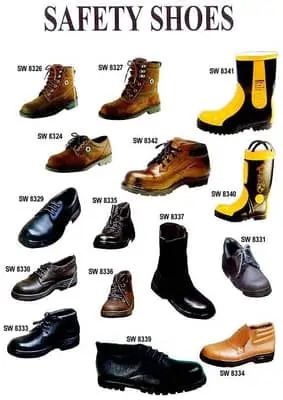10 Points for Purchasing Work Boots
Treat your feet right. They support you, so you need to support them. Wear work boots that fit and are appropriate to your occupation.
Work boots that are not appropriate may fail to prevent injury and cause foot problems. Poorly fitting work boots can result in bunions, corns, calluses, hammertoes, and other foot problems. You can prevent some of these problems by paying attention to how you select your work boots.
Here are some suggestions on work boot selection and fit from the American Orthopaedic Foot & Ankle Society and the Pedorthic Footwear Association.
- Safety first. Know the specific hazards of your work environment. Safety toe caps (steel or composite), metatarsal guards, puncture-resistant soles, and special construction materials can help protect against falling objects, sharp metal edges, chemicals or electrical hazards.
- Buy what you need. Go to a store that carries footwear specific to your job. Ask an experienced fitter to measure your feet and fit you with appropriate shoes or boots. An experienced fitter knows the characteristics of the footwear the store carries, and can match the footwear’s design and materials to your special requirements.
- Check your soles. Make sure the footwear soles are appropriate to your working conditions. Soles can be designed to resist slips and protect your feet from heat, puncture, and electrical shock.
- Wick away the moisture. Buy leather uppers lined with moisture-wicking lining to keep your feet dry. This will help prevent blisters and corns.
- Stability is important. Wear shoes or boots with flat soles and a wide base. They will provide greater stability when working on uneven surfaces.
- Completely cover your feet. Protective footwear must completely cover the foot with puncture-resistant material. High-top lace boots should lace 1/2” to 1” of the full length of the lace row to keep your heel securely in the boot.
- Make sure you can wiggle your toes. The toe box needs to be deep enough so you can move all your toes inside without feeling pressure. Try boots on at the end of the day or shift when your feet are largest. Wear your usual work socks. Usually one foot is larger than the other so buy to fit the larger foot. (NOTE: If you have diabetes or loss of feeling in your feet, you may need special fitting assistance.)
- Get the proper support. Strong heel counters provide stability for your ankle and should fit snugly. A wedge bottom sole or puncture-resistant midsole improves stability for ankle and arch support.
- Comfort is critical. Footwear should feel comfortable when you first try it on. Don't expect to need a "break-in" period before footwear feels comfortable.
- Try protective footwear out while you’re in the store. Walk on a hard surface and not a carpeted showroom floor. Shock-absorbent removable insoles provide the best available foot-bed. They can be removed to be cleaned, replaced as needed or substituted with a custom prescription insert.
- No footwear can provide protection against all injuries. Contact the footwear manufacturer if you have specific questions.
Source: The American Orthopaedic Foot & Ankle Society (AOFAS)

